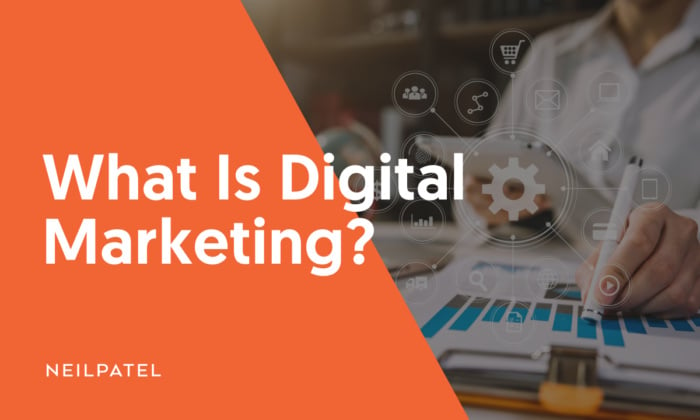
What is digital marketing, and why does it matter? That’s precisely what I plan to discuss today.
Digital marketing means using digital channels, like search engines, social media, email, mobile apps, and websites, to promote a product or service. This umbrella term also includes marketing using digital devices such as TV or radio.
Examples of online digital marketing include:
- Search engine optimization (SEO): optimizing a website to improve its visibility and ranking on search engines like Google.
- Pay-per-click advertising (PPC): paying for advertisements to appear on search engine results pages or social media platforms.
- Social media marketing: creating and sharing content on social media platforms like Facebook, Twitter, and Instagram to increase brand awareness and engagement.
- Content marketing: creating and sharing valuable content, such as blog posts, e-books, or videos, thus attracting and retaining a specific audience.
- Leveraging traditional offline media for advertising: using radio and TV marketing, billboard advertising, print, and in-person events.
Analysts predict the global digital advertising and marketing sector will reach $786.2 billion by 2026, with clicks and display ads among the most dominant forms.
Then there’s offline digital marketing like:
- Out-of-Home Advertising: This involves using billboards, transit ads, or other types of visual media to promote your brand or product. This can be a great way to reach a broad audience and create a strong visual impression.
- TV Marketing: where you promote your products in the form as adverts, infomercials, or even demonstrations.
- Radio marketing: Trailers and commercials promoting your product to listeners.
In other reports by PR Newswire, digital marketing is worth an estimated $460 billion in the US.
You can do digital marketing online and offline, and using a combination is vital to any well-rounded strategy. These techniques and strategies help businesses to reach their target audience, engage with them, and ultimately convert them into customers.
This guide covers everything you need to know to get started with digital marketing, but first, let’s discuss why it’s so essential to your business.
Why Digital Marketing Matters
Remember billboards? I do.
As a young kid in California, my experiences from the back seat of our car mostly alternated between: “Mom, when are we there?” and “Uh, look, McDonald’s, can we go?” whenever one of those 10-foot billboards popped up on the side of the road.
Growing up with Indian parents, the answer to both of those would, most times, be the same: “Not yet.”
Sometimes, big brands would even start a billboard war, like this one between Audi and BMW, which got quite a few laughs:
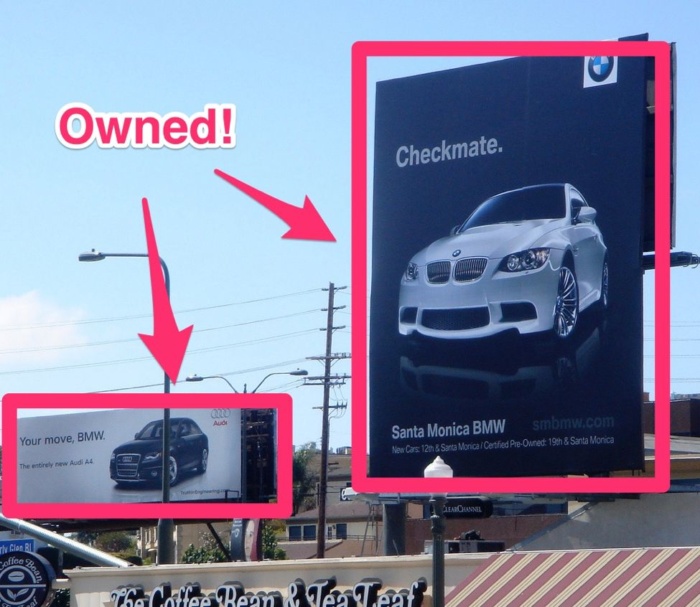
My clients spent hundreds of millions of dollars on billboard advertising not long ago. However, times have changed.
Today, most companies have moved to online (digital) marketing.
That’s because Google and Facebook generate more revenue than traditional media companies.
Then there is the use of mobile devices.
You can go just about anywhere these days. Whether you are at the grocery store, a restaurant, or even a movie theater, they have one thing in common: you’ll see plenty of people with their eyes practically glued to their phones.
Phone advertisements are like mini billboards, broadcasting adverts whenever we look something up.
Mobile usage is massive, and the figures are only heading upward.
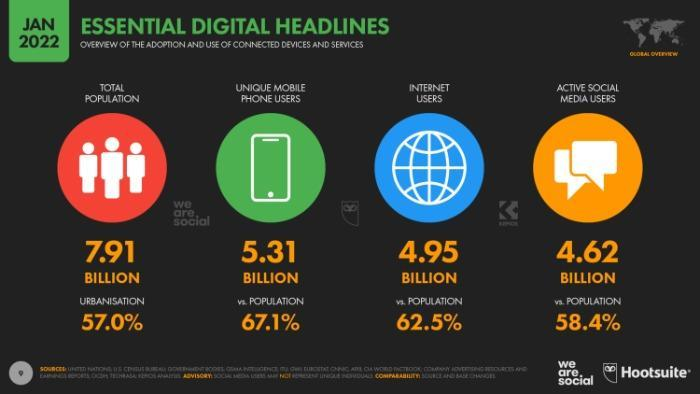
There are 5.31 billion mobile phone users worldwide, 4.95 billion internet users, and 4.62 billion social media users.
Moreover, the share of people spending more time using electronic devices continues to rise while print advertising declines.
The stats are clear.
Digital marketing isn’t optional if you want to get your product/services in front of customers; your customers are online, and you must be there too.
And don’t go thinking digital marketing is just for the big corps.
Even the smallest local stores can benefit from some form of online advertising. According to Google, 88 percent of people who conduct a local search on their smartphone visit a related store in the next week.
All of this, and I haven’t even gotten to some of the best things about digital marketing. It:
- Provides access to more data: you get access to vital analytics about your customers, how they navigate the buying cycle, and what they want. You can use this data to analyze what works and doesn’t and tailor your strategy accordingly.
- Helps you reach a wider audience: Digital marketing allows you to reach a wider audience than traditional marketing methods. For example, social media platforms like Facebook and Twitter have billions of active users, and advertising can help you target demographics. By 2027, social network users will reach almost six billion. So it’s a platform you can’t ignore.
- Is cost-effective: Digital marketing is more affordable than traditional marketing methods like TV or print advertising. With digital marketing, you can create highly targeted campaigns with a better return on investment (ROI) for your business and reach your goals.
- Provides greater engagement: Digital marketing allows for greater engagement with your target audience. You can use email, social media, and content marketing tactics to keep your audience engaged and interested in your products and services. For instance, creating a blog with valuable content on your website can attract visitors and make them more likely to buy. According to HubSpot, 56 percent of people who read a blog post go on to purchase.
- Offers measurable results: With digital marketing, you can track and measure the effectiveness of your campaigns. You can use tools like Ubersuggest and Google Analytics to analyze web traffic, conversion rates, and other metrics to see your campaigns’ performance.
- Helps your business stay competitive: A digital marketing strategy is essential in today’s digital age. Your competitors are likely using digital marketing to reach their target audience, so you don’t want to fall behind. For instance, email marketing offers the highest ROI compared with other digital marketing strategies.
These are just some examples of why digital marketing is important. By combining digital marketing tactics, you can improve your visibility, engage with your target audience, and drive revenue for your business.
The History of Digital Marketing
Digital marketing first became popular in the early 2000s, but it’s been around much longer.
Like, WAY longer. About 100 years longer, to be exact.
Here’s a pic of the first digital marketer in history:
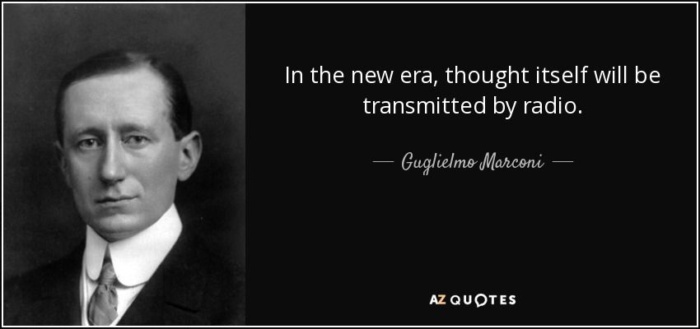
His name was Guglielmo Marconi, and he was born in 1874.
In 1896, Marconi became the first human to demonstrate a “public transmission of wireless signals” when he invented the radio.
While it would take another ten years for the radio to reach the general public, it sure didn’t take the creators long to realize they could use it to sell stuff.
The first live broadcast was from an opera performance at the Met, and guess what people did after it?
They bought show tickets!
Digital marketing was born.
Online Digital Marketing Overview
The two main pillars of digital marketing are online and offline. That said, since I’ll talk about online marketing in a separate guide, I’ll only mention the different areas of online marketing here for completeness.
The seven big categories of online marketing are:
- Search engine optimization (SEO)
- Search engine marketing (SEM)
- Content marketing
- Social Media Marketing (SMM)
- Pay-per-click advertising (PPC)
- Affiliate marketing
- Email marketing
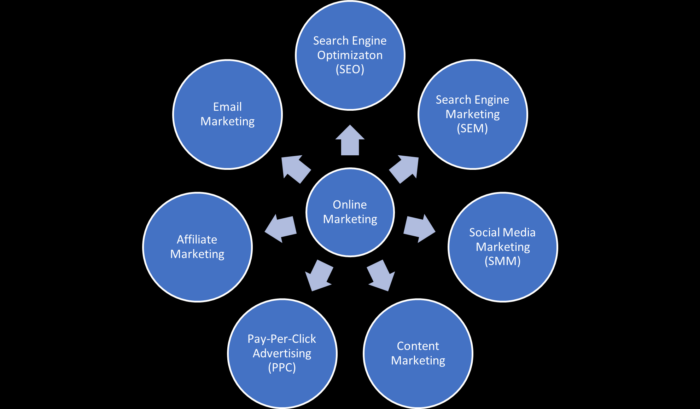
Intro to Offline Digital Marketing
There are five main categories of offline digital marketing:
- Enhanced offline marketing
- Radio marketing
- Television marketing
- Phone marketing
- QR codes
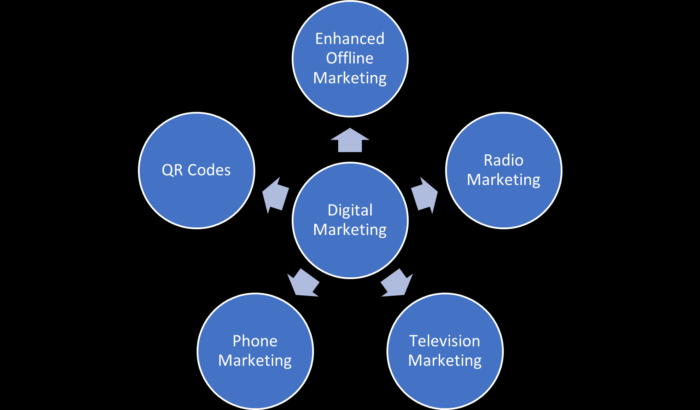
As the name suggests, enhanced offline marketing is performed solely offline. It integrates traditional offline marketing methods like direct mail, TV, radio ads, billboards, or event marketing.
First, let’s look at an example of enhanced offline marketing in action. Let’s say your restaurant uses iPads for your customers to place orders. In that case, the offline experience of eating Thai food is enhanced with this electronic device.
Next, there’s radio marketing. So the next time you hear an annoying, over-enthusiastic car dealer shout every word of their commercial, thank Mr. Marconi.
Of course, we can’t forget television marketing. Although streaming is hugely popular, traditional TV advertising still has its part. Statistics show revenues from TV advertising reached 171 billion in 2022.
Although phone marketing might seem old-fashioned, 102 call centers opened in the United States in 2021, and call centers made an annual revenue of $21.2 million.
Enhanced Offline Marketing
What’s the difference between a billboard in the desert of Arizona and a billboard in New York City’s Times Square?
The size? The product?
Three letters: LED. Light emitting diodes.
All of the billboards in Times Square are electronic!

Credit: NICOLAS ECONOMOU / GETTY IMAGES
Why? Because in the desert of Arizona, no one’s competing with you for people’s attention. If you have a billboard at all, you win.
In Times Square, attention is probably more valuable than anywhere else in the world, with more than 360,000 visitors daily.
With a constant flow of buses, taxis, promoters shouting, and electronic billboards, there are distractions everywhere you go. Some of the billboards are even interactive, showing live feeds of the people on the square or pictures of customers.
Here’s another example.
What do you see when you walk into an Apple Store these days?
People leaning over iPads, Macbooks, and iPhones.
Product demos should be an essential part of your digital marketing strategy if you have any type of electronic product.
Another example is those free trial CDs that AOL sent out in the early 90s—you may remember those were everywhere at one point. All those CDs may have been annoying, but they’re likely a big reason for AOL’s early success.
Radio Marketing
The radio isn’t dead. It’s thriving: Just look at the stats:
- 83 percent of Americans listen to radio weekly.
- People spend an average of 99 minutes per day listening to radio content.
- Revenue from radio is predicted to reach 35.33 billion in 2023.
For brands, radio can be a smart move for offline digital marketing. These days, hosts read out advertising sponsorships at the beginning of shows when they’re more likely to get listeners’ attention.
If this is an approach you’re considering, find your local radio stations with a quick Google search. Look for a station whose audience reflects your company’s target demographic; radio stations should provide the data that helps you select the right fit.
For example, if your company sells maternity products, search for a radio program whose average listener is a female between 24 and 40.
If you go the traditional radio advertising route, the key is to be entertaining and catch the listener’s attention.
Here are some tips for creating a great advert for traditional radio:
- Keep it brief and memorable: Radio ads are generally short, typically 30 seconds or less, so focus on delivering your message clearly, concisely, and in a memorable way. Use simple language and a clear call to action.
- Focus on your audience: Understand your target audience and tailor your message to their needs and interests. Use language and tone that resonates with them, and highlight the benefits of your product or service.
- Use sound creatively: Since you can’t rely on visuals, use sound to capture the listener’s attention and make an emotional connection. For example, consider using music, sound effects, or voiceovers to create a sense of atmosphere or reinforce your message.
- Repeat your message: Repetition is critical in radio advertising. Repeat your brand name and message multiple times to ensure it sticks in the listener’s memory.
- Measure your results: Use tools like unique landing pages or promo codes to track the effectiveness of your radio ads and adjust your strategy accordingly.
Overall, the key to creating an effective radio ad is to create a memorable message that resonates with your target audience and stands out from the crowd.
Cadillac and Dairy Queen are two brands that consistently produce solid radio commercials.
You can listen to some examples here.
TV Marketing
While streaming services like Netflix and Amazon Prime seem to dominate, television marketing is still huge and unlikely to disappear fully.
Here are some fast facts about TV marketing:
- 123.8 million households in the US have a television.
- Cord-cutting households (those ditching cable) are expected to reach 46.6 million in 2024.
- Eighty-seven percent of US households have at least one streaming service.
However, targeting the right audience with cable TV ads is more challenging. They typically have a low ROI compared to other forms of digital advertising and generally seem irrelevant in the digital age.
That said, one type of television ad may still be worth it, but it costs you big time.
A 30-second commercial aired during the Super Bowl costs $7 million.
The often viral and memorable commercials still pay for themselves thanks to their cross-pollinating effect. These days, social media complements in-game advertising, creating buzz long after the ads have played on screen.
If your commercial makes it to the blacklist (commercials the network decides aren’t suitable for TV), the viral effect is usually even more significant, like the infamous (and banned) Carl’s Junior ad that couldn’t be shown in the 2015 Super Bowl.
Moreover, these commercials become online assets, generating millions of YouTube views over time.
Sadly, the hype of the Super Bowl commercials is probably more of a remnant from a success period that’s about to fade.
Therefore, the $27 billion companies spend annually worldwide on TV commercials may not always be the best investment for your business. Television advertising is changing to make way for more custom-tailored experiences.
If you plan on doing offline digital marketing, I suggest focusing on a marketing platform or channel of the future—which, in the case of television marketing, means streaming services.
Phone Marketing
There’s no denying it. Mobile marketing is where it’s at.
Nearly 81.60 percent of Americans own a smartphone, and more people access the internet from their phones than via a desktop PC or laptop.
90 percent of people prefer to receive texts from businesses instead of phone calls. Why? Because it’s convenient and respectful of your customers’ time. It also means you can leverage many opportunities for marketing and promotion offers.
Mobile marketing is here to stay and on course to grow to 399.6 billion next year.
Let’s look at offline ways to market your products using phone marketing.
Calling and Texting
Cold calling means calling someone without prior contact to make a sale.
Despite technological advances, cold calling remains a marketing technique—with an average success rate of two percent. Although it’s a valid tactic for some sectors, it lacks the scalability of social media or email.
What works better is SMS marketing.
With a 98 percent open rate, a text message is almost a guaranteed read.
While you should get permission first, for example, by having your customers text a certain word to a phone number, several providers offer text marketing at scale.

There are several ways to leverage text message marketing:
- Special deals, coupons, and discounts are great for restaurants to get additional customers and turn walk-ins into regulars. Here are some more examples of Tatango’s successful restaurant text messaging campaigns.
- Using text reminders as customer service can enhance your mobile marketing. For instance, many pharmacies alert customers when their prescription is ready for pickup.
- Another option is a loyalty program where you text participating customers special deals and giveaways.
QR Codes
QR codes are a type of barcode that take users to a specific web page or app.
This one, for example, is for the English home page of Wikipedia:
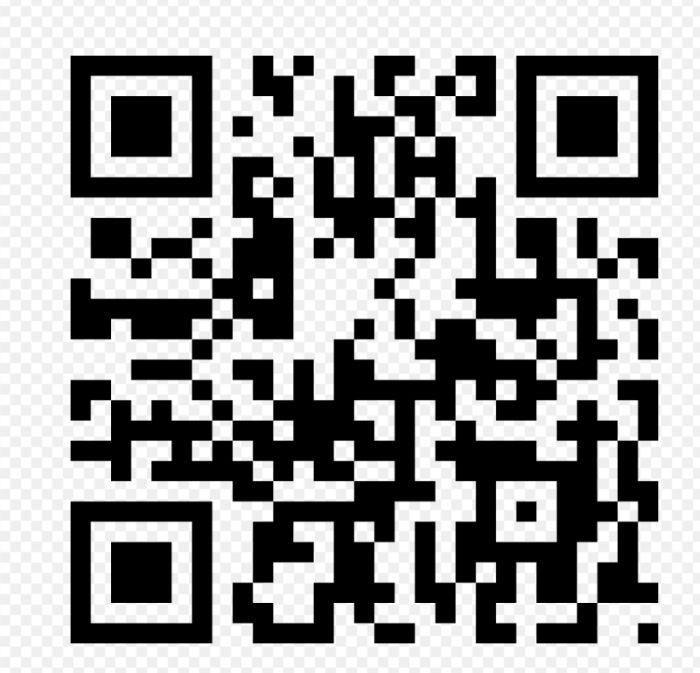
Once, you used to download a specific app to use QR codes, but now all you need is the camera on your smartphone to scan and open a site.
Brands can use QR codes to deliver ads, send users to a video, or combine with other forms of enhanced offline marketing, like in this Burger King television ad:
Another example is Coinbase’s 2022 Super Bowl ad:
How to Set Up an Offline Digital Marketing Strategy
Ready to set up an offline digital marketing strategy? Here’s how to do it in four easy steps.
- Establish an enhanced offline marketing strategy: Create ads optimized for platforms like digital billboards, give product demos, and offer digital product samples.
- Create a radio marketing strategy: Approach local radio stations about ad sponsorships or create engaging traditional ads using silly voices, local celebrities, or mentioning trendy topics.
- Engage in television marketing: The most effective way to get a decent ROI on TV ads is to buy ad time during popular events that people watch live, create ads that go viral (by being controversial, emotional, or funny), or create ads you can reuse across multiple ad channels.
- Use SMS marketing: Use text messages to get special deals and offers in front of more of your customers.
4 Steps To Build Your Digital Marketing Strategy
Whether you are an established business or a small start-up, wasting time and money on marketing campaigns is a common brand fear. A well-executed digital marketing strategy is needed to help you achieve your marketing objectives and grow your business.
If you’ve never developed a digital marketing strategy, the process can feel a bit intimidating. Fortunately, there’s really only four key steps to keep in mind.
Let’s discuss each one in more detail.
1. Research and Understand Your Audience
Before diving into digital marketing strategy, let’s spend some time unpacking the concept of target audiences. This infographic from Search Engine Journal does a great job explaining the difference between your target market, target audience, and target persona.
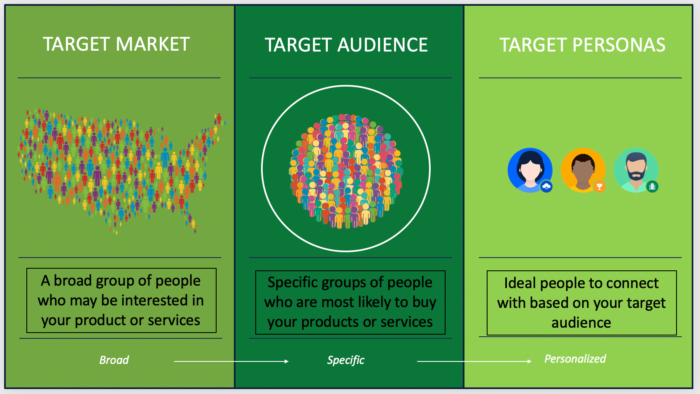
Typically, you would target audiences by specific data points, like:
- Gender
- Age
- Education
- Purchasing power
- Location
This precision allows you to spend your ad budget efficiently by marketing to the people most likely to buy your product or service.
Of course, this leads us to the most challenging aspect of targeting: properly defining your audience. Don’t get overwhelmed, though. Instead, follow these pointers to reach your ideal customers.
Start by analyzing your market. Are you operating in a well-established market or a developing one? Is your industry mainstream? Who are your major competitors? Which types of content work well for them?
Having defined your market, think about the kind of customer you’re looking for. Start with a general idea of your ideal customer,, then use data points to narrow down your audience. For example, a possible target audience for your product might be men, 25 to 35 years old, living in Colorado, with a monthly income of $4,000 to $6,000.
Finally, find the most popular blogs in your industry, the e-commerce stores they shop at, like REI, and the YouTube videos they watch. Keeping track of this info gives you insight into what they like to consume, making outreach and content creation significantly easier. Use tools like BuzzSumo or Ask the Public to pick up on trending content and for social listening.
2. Set Digital Marketing Strategy Goals and KPIs
There’s a trend I’ve noticed when discussing a digital marketing strategy: marketers often gloss over the concept of goal-setting. This is a shame because a well-defined marketing plan can empower your brand.
For example, this visual from Moosend details the numerous strategies you could include in your marketing plan.
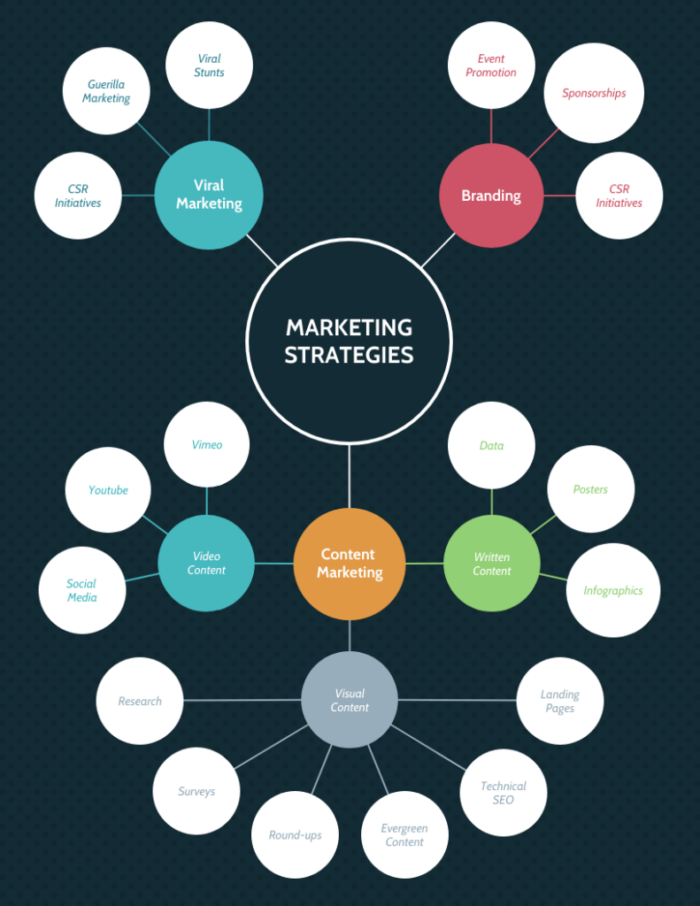
Having goals ensures that your digital marketing strategy is easy to monitor and update.
However, you must set up your marketing plan in the right way.
When the average person thinks about setting goals, they tend to be qualitative goals. An example of a qualitative goal would be to improve your brand image or increase your brand’s position within your industry.
However, there’s a problem with these types of aims, as they’re notoriously challenging to measure.
Abstract concepts are generally not useful for an average brand’s digital marketing efforts as they are difficult to measure and improve. Instead, it is better to focus on quantitative goals.
Here’s an example: Brand A wants to improve customer perception, but after spending a significant amount on advertising and promotion, it doesn’t know why they are receiving so much traffic or how much traffic led to conversions.
In contrast, Brand B wanted to increase conversions of its key product X by five percent over the next six months. It’s established tangible milestones for each abstract goal that it can easily measure and experiment to improve its marketing campaign.
By establishing clear and measurable goals and identifying KPIs, brands can make long-term experimentation and growth possible.
3. Create Your Digital Marketing Strategy
Now that we’ve covered the basics, it’s time to build and implement a digital marketing strategy.
The biggest challenge here is determining which digital marketing channel to focus on. If this step stresses you out, you’re not alone. One of the reasons this decision can feel so intimidating is the fear of investing in a channel that won’t work.
Fortunately, our framework for digital marketing strategies minimizes that risk dramatically. By starting with small, hyper-focused campaigns, brands can track a particular channel’s effectiveness without spending thousands of dollars.
Are you interested in paid social media ads, for example? You could set a goal, implement a small marketing push, and analyze how valuable Facebook ads are to your brand. Then, you can use that data to predict how effective future campaigns within that channel will be.
In fact, by using this approach for multiple channels, you’ll quickly develop a clear sense of which channels your audience responds to. It’s beneficial to constantly test both marketing tactics and different target audiences to collect as many relevant data points as possible.
Within a year, you’ll have a collection of data points that are easy to interpret and leverage into successful marketing campaigns.
Creating Content That Resonates
Regarding content creation, there are generally two schools of thought- entertaining or educating your audience. If your audience wants to be entertained, it’s brand appropriate, and you feel confident in your content crafting abilities, fun content can be a powerful tool.
Maybe it’s a funny video ad, or perhaps it’s some memes on social media. It’s certainly not the right approach for everyone, but it’s effective when used correctly. Take a look at Old Spice and see how its unusual humor perfectly captures its brand voice.
Let’s say you aren’t confident in your comedic timing, or your brand just doesn’t lend itself to absurdist internet humor. That’s where the second school of thought comes in. Educating your audience can be just as powerful as entertaining them.
To be clear, when we talk about educating your audience, that doesn’t mean educating them solely on your brand. Consumers have pain points that they need to address, no matter the industry. Typically, they’ll have industry-related pain points that you might not be a direct solution for.
Here’s an example. Let’s say you’re selling those hiking backpacks again. Could you stick to making content about hiking backpacks? Absolutely, but there’s so much more you can discuss!
If you’re selling to the hiking community, they have all sorts of questions about what kind of grills to use, tips for first-time hikers, what they should look for in a sleeping bag, etc. If you’re an expert in your field, you probably have an entire blog’s worth of content in your head right now!
A good rule of thumb is if you wish you had known about it when you first started, it will be helpful to someone. You don’t need a massive ad budget to connect with consumers. You just need to create marketing content that feels legitimately helpful. If you can do that, you can build genuinely impactful marketing campaigns.
Adapting Your Digital Marketing Strategy for Seasonal Trends
You’ll also want to adapt your digital marketing strategy to include major holidays and occasions. That way, you can maximize your sales throughout the year for occasions like Black Friday and Valentine’s Day, etc.
Here are some tips to maximize holiday sales:
- Start early and have a plan: Start your holiday digital marketing plan months in advance to beat the competition. Research keywords by using Ubersuggest for seasonal SEO. Outline achievable goals, plan tactics, list assets, and create a realistic timeline.
- Host a contest: Hosting an online contest is quick, easy, and cost-effective. Tease upcoming holiday deals and events and keep the prize simple—a free product is all it takes to get your campaign going.
- Use paid campaigns to increase awareness: Create awareness-based campaigns on major paid ad channels such as Google, Facebook, and Instagram. Also, be thoughtful with your budget and account for higher CPCs leading up to certain holidays.
- Use promotions but use them carefully: Rather than trying to compete on price, why not deliver value in another way? Free shipping, gifts, and other rewards are a great way to retain brand value while offering the discounts holiday shoppers are eager for.
- Create holiday gift sets: Increase conversions and average order value (AOV) by bundling products into gift sets at a discount. Use inventory analytics to determine which products consumers often buy together.
- Create laser-targeted email campaigns: With every brand utilizing email marketing, standing out in a sea of sales messages is vital. Segment your audiences, personalize your offers, and remember to optimize for mobile.
- Try new platforms: Consider trying a new marketing channel this holiday season by launching a TikTok or Instagram Live campaign. Who knows, you might come across a profitable platform for long-term advertising.
- Make a plan for long-term success: Use holiday marketing to increase brand awareness and site visits. Retargeting ads on Google and Facebook are cost-effective and, for best success, aim to target visitors who have visited your site in the past. This will keep your brand top-of-mind well beyond the holiday season.
4. Continue Improving
Many brands struggle with achieving long-term growth despite collecting the right data points. Turning data into the next quarter’s marketing campaign can be frustrating due to issues such as:
- Not knowing which problems need fixing
- Not fully understanding the audience
- Too much data leads to confusion
- Limited marketing budget
Setting clear and tangible goals and tracking results can simplify the process, yet some brands need help understanding the idea of long-term growth and what it entails. Growth is not always linear, and experimentation is necessary to identify successful components.
With each new expansion of your digital marketing strategy, you’ll identify parts that work and that don’t. Savvy brands understand this and commit themselves to promoting long-term business growth. So they’ll explore the latest social media platform. They’ll try the newest marketing channels and so on until they see success.
The goal of a solid digital marketing strategy is not to stumble upon a channel and hope for rapid growth but instead to collect valuable data and develop a long-term, sustainable plan for continued success.
Partnering With A Digital Marketing Agency
Now you have a firm grasp on the ins and outs of offline and online digital marketing strategies and you understand the benefits of digital marketing services and what they can do for your business.
However, you may not want to go it alone and you may be considering partnering with a digital marketing agency.
Here are a few key benefits of how an agency’s digital marketing services can drive your strategy forward.
You benefit from deeper expertise: Digital marketing agencies have expertise in specific roles or industries due to their specialization and experience with multiple clients. When hiring an agency, you gain access to a team with diverse skills and networks, allowing for more flexibility and perspectives.
Scalability as you grow: Scaling a business can present challenges in finding the right talent and acquiring new customers. Working with a digital marketing agency can help address both of these challenges.
A dedicated partner: Working with a marketing agency versus hiring an employee offers different dynamics. An employee understands their chain of command and likely won’t provide strategic input unless in senior management.
How to Choose The Right Digital Marketing Agency
Not sure what to look for in a digital marketing agency? Here are a few tips to help.
- Know your goals and desired outcomes: When you know what you want to achieve, finding the best agency to suit your needs is easier.
- Look for a sizable portfolio or list of past clients: Professional digital marketing agencies are proud of who they work with and their work. Furthermore, they typically display their partnerships on their website for the world to see.
- Find experienced and specialized team members: It’s essential to ensure the agency you hire has the right team members to suit your project. Search on Google, ask for a recommendation, or look on LinkedIn.
- Seek social proof and a strong industry reputation: Social proof, like testimonials and previous client reviews, can give you deep insights into what working with a specific agency is like.
- See if you have similar core values and company culture: Working with a digital marketing agency that values the same things and operates in a similar environment is crucial. Doing so helps the agency mesh with your team.
- Look at website design: The best digital marketers know how essential a well-designed website is; if they’re not executing internal projects well, why would you expect them to deliver something better for yours?
- Ensure they aren’t making outlandish promises: The type of results an agency promises on its website strongly indicates how well they understand the industry. For example, anyone claiming to fast-track you to the number one spot on Google doesn’t know that SEO is a long-term and short-term marketing strategy. Or that it requires continuous work to maintain.
- Are they easy to contact?: Navigating a website shouldn’t feel like a maze. The best digital marketing agencies make it simple for potential clients to get in touch by providing a clear call to action.
I have multiple agencies in various countries worldwide if you need digital marketing services.
Get the Most Out of Your Partnership
Once you’ve found the right digital marketing agency, you can do several things as a client to maximize your results and get the most out of your strategic partnership.
Doing the following things can help set the stage for effective and successful collaboration through every project phase.
- Prepare your team and do your homework: It’s essential to have everyone on the same page; meet with your team and let them know the extent of your new project or partnership with plenty of time to prepare for it.
- Understand the scope, process, and timeline: Before the project starts, ensure every stakeholder agrees on the size and timeline before moving forward. But, again, this is just as much your job as it is your agency’s.
- Get ready to collaborate: The best digital marketing projects are highly collaborative. Furthermore, your input, thoughts, and ideas help move the project forward in the right direction to match your desired outcomes.
- Be ready to forfeit control: You hired the agency for its expertise. This means giving them complete control over certain aspects of the project to let them do what they do best. It’s also important to listen to what they say.
- Ask questions: If you’ve never worked with a digital marketing agency, you will see and experience many new things. If you’re unsure why the agency is suggesting something, the best thing to do is ask questions.
FAQs
Digital marketing is advertising delivered through digital channels, including social media, mobile applications, email, web applications, search engines, websites, or any new digital channel.
The offline and online worlds are colliding. Traditional devices such as fridges, ovens, and even billboards will all be modernized to leverage digital media.
Google and Facebook generate more revenue than traditional media companies because they have more eyes on them. That’s why digital marketing matters; it is where the attention is.
Digital marketing consists of key channels like SEO, paid media, content marketing, social media, and affiliate marketing.
Start by reading blogs, white papers, and other research to learn as much as possible. Then, consider taking a certification course in the field you want to work in.
Conclusion
That’s the scoop on digital marketing. But, as you can see, the internet is not the only place for marketers to gain success, even today.
Whether it’s the more traditional offline digital marketing methods, you’re promoting online, or a combination of the two, a solid strategy can lead you to success.
Employing these offline digital marketing tactics can help diversify your lead generation beyond social media, content marketing, and the like.
Whatever your aims or budget, you can put a digital marketing plan in place and start reaching new audiences.
Do you use digital marketing strategies in your business? Which channel is most effective?
